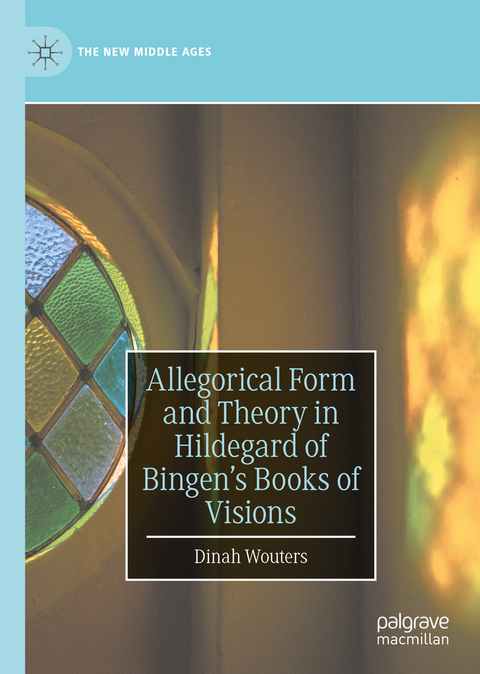
Allegorical Form and Theory in Hildegard of Bingen’s Books of Visions
Springer International Publishing (Verlag)
978-3-031-17191-8 (ISBN)
Dinah Wouters received her PhD in Latin literature from Ghent University, Belgium. She co-founded the research group RELICS and the open access journal JOLCEL, which promotes the study of Latin literature as a European literature. Her current project studies the impact of early modern Latin drama on a European scale.
1 Introduction.- Integumental Hermeneutics and Prescholastic Philosophy.- Allegory, Language, and Cognition.- Linking Allegorical Form to Allegorical Theory.-References.-2 Vision and Explanation.- Vision and Explanation.-The Function of the Allegory.-The Formal Interplay of Allegory and Allegoresis.- Allegory and Symbol.-References.-3 Allegory as Form and Concept.- Distinguishing Between Allegory and Allegoresis.-Prejudiced Distinctions in Modern Theory.-Blurred Distinctions in Medieval Hermeneutics.- Interactions Between Allegoresis and Allegory.-Allegory as Form: Figurative Language and Levels of Meaning.-Metaphor.- Pun.-Personification.-Metonymy.- Allegory as Idea: A Vital Belief and Conceptions of Allegory.-Language: Suprarealism and Self-Consciousness.-Reality: Fabulism and Figuralism.- Reversal of Values.-References.-4 Exegetical Form: The Eccentric Exegesis of the Homilies.-Creative Allegoresis in the Expositiones.-Multiple Interpretations and Narrative Continuity.- A Formal Definition for the Literal Level.-A Narrative Definition for the Senses of Scripture.-Creating a Narrative.- Exegetical Method: The Miraculous Catch of Allegory?.-The Allegoresis of the Expositionesand the Allegory of the Visions.-References.- 5 Allegorical form: Narrative, the Cosmos, and the End of Time.-The Narrative of the Parables.-The Reality of the Cosmos.- The Textuality of Visionary Reality.-The Reality of the Textual Cosmos.-The End of Time.- References.-6 Allegorical Cognition through Words.-Hildegard's Model of the Mind.- Other Models of Cognition.-The Circular Mind.-Perceptions as Cognitive Agents.- The Absence of Mental Images.-The Essential Role of Words.-The Promotion of Words Over Images.- Hildegard's Turn to Language.-Exegetical Cognition.-From Hermeneutics to Epistemology.- Allegorical Creation from Exegetical Method.-Glossing and Properties.-Allegorical Handbooks.- The Cognitive Dynamics of Reading Allegorically.-References.-7 Allegorical Revelation through Prophecy.- Allegorical Interpretation as an Essential Part of Revelation History.-The Old, the New, and the Interpretation of Each.-Allegory in Deeds and in Words.- Veils and Illumination.-Allegory and Forms of Prophecy.-Clarity, Obscurity, and Hildegard's Prophetic Goals.- Different Kinds of Prophecy in Hildegard's Works.-Cognition and Forms of Visionary Experience.-Augustine's Theory of Vision.- Hildegard's Visio Spiritualis/Intellectualis.-Augustine's Cognitive Visions.-The Continuity Between Vision and Cognition in Medieval Texts.- Becoming a Prophet.-The Prophet and the Reader.-References.- 8 Beliefs about Language and the Construction of Allegorical Form.-Allegorical Visions and Scripture.-Exceptional Language and the Reference to Nature.- Reversal of Allegory and Allegoresis.-Allegorical Form and Truth.-Allegorical Language.- The Origin and Fall of Language.-In Search of a Theological Language.-A Sphere of Literary Symbolism?.- Hildegard's Faith in Language.-Conclusion.-References.
| Erscheinungsdatum | 07.12.2022 |
|---|---|
| Reihe/Serie | The New Middle Ages |
| Zusatzinfo | XI, 291 p. |
| Verlagsort | Cham |
| Sprache | englisch |
| Maße | 148 x 210 mm |
| Gewicht | 524 g |
| Themenwelt | Geisteswissenschaften ► Philosophie ► Erkenntnistheorie / Wissenschaftstheorie |
| Geisteswissenschaften ► Sprach- / Literaturwissenschaft ► Anglistik / Amerikanistik | |
| Geisteswissenschaften ► Sprach- / Literaturwissenschaft ► Literaturwissenschaft | |
| Schlagworte | Allegory • Biblical Studies • Bingen • Hildegard • Medieval Women • Middle Ages • Religious writing • Vision Books |
| ISBN-10 | 3-031-17191-8 / 3031171918 |
| ISBN-13 | 978-3-031-17191-8 / 9783031171918 |
| Zustand | Neuware |
| Haben Sie eine Frage zum Produkt? |
aus dem Bereich

![Was heißt Denken?. Vorlesung Wintersemester 1951/52. [Was bedeutet das alles?] - Martin Heidegger](/media/113619842)
